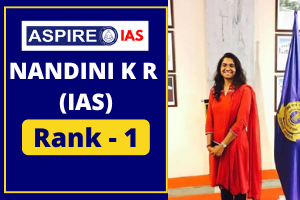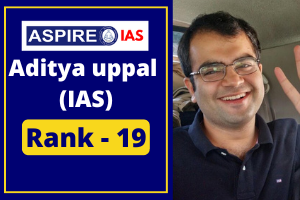Online Learning Portal
Online Learning Portal

Hybrid Classes
We provide offline, online and recorded lectures in the same amount.

Personalised Mentoring
Every aspirant is unique and the mentoring is customised according to the strengths and weaknesses of the aspirant

Topicwise Mindmaps
In every Lecture. Director Sir will provide conceptual understanding with around 800 Mindmaps.

Quality Content
We provide you the best and Comprehensive content which comes directly or indirectly in UPSC Exam.
IAS Foundation 2024
Optional Classes
Current Affairs
Test Series
Others Links
UPSC Prelims Classes 2024
Prelims
Mains Classes 2024
Mains & Interview
Mains Material
Test Series
Free Study Material

DAILY NEWS ANALYSIS
NASA’s Artemis: First human base camp Part of: GS Prelims and GS-III- S&T National Aeronautics and Space Administration (NASA) unveiled its plan to setup ‘Artemis’, the first human base camp on Moon’s South Pole by 2024 through a 13-page report titled “NASA’s Plan for Sustained Lunar Exploration and Development”. The report was submitted to the National Space Council, an advisory group to United States (US) President Donald Trump, presided over
Black hole What is a black hole? A black hole is an object in space that is so dense and has such strong gravity that no matter or light can escape its pull. Because no light can escape, it is black and invisible. What is Event Horizon? There’s a boundary at the edge of a black hole called the event horizon, which is the point of no return — any light or matter that crosses that boundary is sucked into the black hole. It would need to travel faster than the
China Mars mission Tianwen-1 Part of: GS-III- S&T Space (PT-MAINS-PERSONALITY TEST) Aiming to catch up with India, U.S., Russia and the European Union to reach the red planet, China’s Mars mission plans to complete orbiting, landing and roving in one mission China named its first Mars exploration mission to be launched later this year as Tianwen-1 as it celebrated Space Day to mark the 50th anniversary of the launch of the country’s first satellite Dong Fang Hong-1 in 197
Context: For the first time since it started functioning, the gravitational wave observatories at LIGO scientific collaboration have detected a merger of two unequal-mass black holes. The event, dubbed GW190412, was detected nearly a year ago, and this is almost five years after the first ever detection of gravitational wave signals by these powerful detectors. Violent merger showed that it involved two black holes of unequal masses coalescing, one of which was some 30 times the mass of
SOFIA SOFIA, the Stratospheric Observatory for Infrared Astronomy, is the largest airborne observatory in the world. It consists of an extensively modified Boeing aircraft carrying a reflecting telescope with an effective diameter of 2.5 meters. The observatory is based at NASA's Armstrong Flight Research Center in Palmdale, California. Thus SOFIA observes universe in infrared wavelengths to get the expanded views. It is preparing for its campaign for observing Saturn’s giant moo
Indigenous Cryogenic Engine A Cryogenic rocket stage is more efficient and provides more thrust for every kilogram of propellant it burns compared to solid and earth-storable liquid propellant rocket stages. Specific impulse (a measure of the efficiency) achievable with cryogenic propellants (liquid Hydrogen and liquid Oxygen) is much higher compared to earth storable liquid and solid propellants, giving it a substantial payload advantage. However, cryogenic stage is technically
SpaceX Crew Dragon: A new era in space exploration On Sunday night, two American astronauts flew to the International Space Station, the world’s only space-based laboratory, located about 400 km from the earth, in a journey that has been undertaken hundreds of times earlier. It was the first time that astronauts used a spaceship built and launched by a private company, and the event is being widely seen as the beginning of a new era in space exploration. Two NASA astronauts fle
Star Formation Nebula White dwarf and Neutron Star or Black Hole GS- Paper-1 Geography / Geography Optional (PT-Mains-I.V) Outlined below are the many steps involved in a star’s evolution, from its formation in a nebula, to its death as a white dwarf or a neutron star. Nebula: a star’s birthplace. Protostar: an early stage of a star formation where nuclear fusion is yet to begin. T Tauri Star Main Sequence Star: E.g. Sun – full of life (nuc
Micius Satellite Micius is the world’s first quantum communications satellite, launched by China in 2016. The satellite serves as the source of pairs of entangled photons. Recently, it has sent light particles to the Earth to establish the world’s most secure communication link. It has successfully brought entanglement-based quantum cryptography to its original ground stations 1,200 km apart by sending simultaneous streams of entangled photons to the ground stations to establish a
HAM Radio Recently HAM (amateur) radio operators have volunteered to help a special task force that has been constituted in Bengaluru to ensure that citizens placed under home quarantine follow the protocol for it. ImpPoints Amateur radio, also called ham radio, is a noncommercial two-way radio communications. They use many frequency bands across the radio spectrum. HAM radio is a real-time communication netwo
NEOWISE after the NASA telescope GS-Paper-3 S&T (PT) The recently discovered comet C/2020 F3 will make its closest approach to the Earth at a distance of 64 million miles or 103 million kilometres while crossing Earth’s outside orbit on 22nd July 2020. It is also known as NEOWISE after the National Aeronautics and Space Administration (NASA) telescope that discovered it. On 3rd July, it was closest to the sun
Turkey’s space program Turkish President Recep Tayyip Erdogan recently unveiled an ambitious 10-year space program that includes missions to the moon, developing internationally viable satellite systems, and sending Turkish astronauts into space. President Erdogan also informed that Turkey plans on establishing its first contact with the moon in 2023 when the nation will mark the centennial of the founding of the Turkish Republic. However, the critics have questioned the Turk
Russia to launch around 40 satellites from 18 countries in 2021 Russia is set to put into orbit around 40 satellites from over a dozen different countries all over the world using the Soyuz-2 carrier rocket in March 2021. Soyuz-2.1, a carrier rocket with the Fregat booster will blast off with the South Korean CAS500-1 (Compact Advanced Satellite 500) space vehicle from the Baikonur space centre in March 2021.
SpaceX to launch first all-civilian astronaut mission in late 2021 SpaceX recently announced that it will be launching four private individuals on a Crew Dragon Capsule into orbit around Earth. The mission is dubbed ‘the world’s first all-civilian mission’. The mission known as Inspiration4 aims at raising support for Children’s Research Hospital. At the conclusion of the Inspiration4 mission, Dragon, the spacecraft will be re-entering the Earth&rsq
SpaceX creates a new world record after launching 143 satellites on a single rocket SpaceX, an aerospace company, has beaten the record of the Indian Space Research Organisation- ISRO where it deployed 104 satellites in February 2017 in a single launch. The reusable rocket launched 143 satellites to space which are part of the SmallSat Rideshare program of SpaceX from Florida’s Cape Canaveral Space Force Station.
New Guidelines for the Geo-Spatial Sector What is the news? The Ministry of Science and Technology has released new guidelines for the Geospatial sector in India. It deregulated the existing protocol and liberalizes the sector into a more competitive field. What is a Geo-Spatial Data? Geospatial data is data about objects, events, or phenomena that have a location on the surface of the earth. The location may be static in the short-term, like the location of a road,
International Space Station It is the only active modular space station (habitable artificial satellite) in the Earth’s Orbit. It is the largest artificial object in space and the largest satellite in low Earth orbit, visible to the naked eye from Earth's surface. It is a joint project between five participating space agencies - NASA (USA), Roscosmos, Japan Aerospace Exploration Agency (JAXA), European Space Agency, and Canadian Space Agency.
Kodaikanal Solar Observatory Kodaikanal Solar Observatory (Koso) has estimated how the Sun had rotated over the Century, from digitized data extracted from old films and photographs. KoSO is an autonomous institute of the Department of Science and Technology (DST). This estimation would help study the magnetic field generated in the interior of the Sun, which causes sunspots and results in extreme situations like the mini-ice age on Earth (absence of sunspots). It could hel
Goldilocks Zones A habitable zone, also called the “Goldilocks zone”, is the area around a star where it is not too hot and not too cold for liquid water to exist on the surface of surrounding planets. Our Earth is in the Sun’s Goldilocks zone. If Earth were where the dwarf planet Pluto is, all its water would freeze; on the other hand, if Earth were where Mercury is, all its water would boil off. Life on Earth started in water, and water is a necessary ingredi
Space Related Facts and Data Indian Space Program Started in 2ndFive Year Plan. Vikram Sarabhai is the architect of the INDIAN SPACE PROGRAM. Space program is run byDepartment of Space, PMO. Quick Facts PSLV-C51/Amazonia-1 is the first dedicated commercial mission of NewSpace India Limited (NSIL), a Government of India company under the Department of Space. Notable payloads launched by PSLV include India's first lunar probe Chandrayaan-1, India's
GISAT-1 Being Planned by ISRO Indian Space Research Organisation (ISRO) plans to launch GISAT-1 into space using a GSLV-F10 rocket. Geo Imaging Satellite-1 or GISAT-1 is India’s first earth observation satellite in a geostationary orbit. The rocket will place GISAT-1 in geosynchronous orbit, and subsequently in geostationary orbit, using its onboard propulsion system. GISAT-1 will facilitate near real-time observation of the Indian sub-continent, under cloud-free conditions
Small Satellite Launch Vehicle Planned by ISRO for April 2021 The maiden flight of the Small Satellite Launch Vehicle (SSLV) - ISRO’s compact launcher - will be made soon. SSLV will meet the “launch on demand” requirements in a cost-effective manner for small satellites in a dedicated and ride-share mode. It is a 3-stage all-solid vehicle that can launch up to 500 kg satellite into 500 km Low Earth Orbit and 300 kg into Sun Synchronous Orbit. With a lower per kg
LIGHT DETECTION AND RANGING SURVEY (LIDAR) TECHNIQUE: National High-Speed Rail Corporation Limited will be adopting Light Detection and Ranging Survey (LiDAR) technique using Laser enabled equipment mounted on a Helicopter for conducting the ground survey for the preparation of a Detailed Project Report for the proposed Delhi-Varanasi HSR corridor. What is LiDAR? It is a remote sensing method that uses light in the form of a pulsed laser to measure ranges (variable distances) to t
AUSTRALIAN SQUARE KILOMETRE ARRAY PATHFINDER: Australian Square Kilometre Array Pathfinder (ASKAP) is a new type of radio telescope developed by the Commonwealth Scientific and Industrial Research Organisation (CSIRO). Recently, this telescope helped map around 300 million galaxies in approximately 300 hours to create a ‘new atlas of the universe. Australian Square Kilometre Array Pathfinder The first light of the Australian Square Kilometre Array Pathfinder was in Oct
ARECIBO TELESCOPE: Puerto Rico’s Arecibo Telescope was built in 1963. It is the second-largest single-dish radio telescope in the world. It was in news recently because of its collapse. It is owned by the US National Science Foundation. It is known for its finding that Mercury rotates in 59 days and not 88 days (original calculation). About Arecibo Telescope The Arecibo Telescope has one of the most powerful radar employed to observe asteroids, planets, ionosphe
SENTINEL-6 SATELLITE The Copernicus Sentinel-6 Michael Freilich satellite is designed to monitor oceans. It was recently launched from California aboard a SpaceX Falcon 9 rocket. This is a part of the next mission dedicated to measuring changes in the global sea level. What is the mission? The mission is called the Jason Continuity of Service (Jason-CS) mission. It is designed to measure the height of the ocean, which is a key component in understanding how the
ARIEL SPACE MISSION - ESA The European Space Agency (ESA) has formally adopted Ariel. What is Ariel? Ariel (Atmospheric Remote-sensing Infrared Exoplanet Large survey) will be launched in 2029. It will perform a large-scale survey of over a thousand exoplanets over a period of 4 years. The explorer that will study the nature, formation and evolution of exoplanets. Significance: Ariel is the first mission of its kind dedicated to measuring the chemical composition an
SPACEX-NASA’S CREW-1 MISSION NASA has certified SpaceX’s Crew Dragon capsule and the Falcon 9 rocket, making it the first spacecraft certification provided by the space agency. What is the Crew-1 mission? The mission is part of NASA’s Commercial Crew Program, whose objective is to make access to space easier in terms of its cost, so that cargo and crew can be easily transported to and from the ISS, enabling greater scientific research. About Space
THIRTY METER TELESCOPE PROJECT. 2020 Physics Nobel Laureate Prof. Andrea Ghez worked closely with Indian astronomers on the design of back-end instruments for the Thirty Meter Telescope Project. About TMT: It is an astronomical observatory with an extremely large telescope (ELT). It is an international project being funded by scientific organisations of Canada, China, India, Japan and USA. Planned location is Mauna Kea on the island of Hawaii in the US sta
GIANT METREWAVE RADIO TELESCOPE (GMRT) The Giant Metrewave Radio Telescope observatory located in Pune has been provided with the prestigious IEEE milestone status. This is the 3rd IEEE milestone recognition being offered to India The previous two IEEE milestone recognition were awarded to JC Bose in 1895 and CV Raman in 1928. JC Bose is regarded as the Father of Wireless Communication. Giant Metrewave Radio Telescope It is an array of 30 radio telescopes operated
RADIO BURST IN MILKY WAY NASA recently observed a mix of radio signals and X-rays in the Milky Way. This has never been observed earlier in the galaxy. NASA has also reported the spotting of Fast Radio Bursts. This was detected by the CHIME telescope. What are Fast Radio Bursts? Fast Radio Bursts are bright bursts of radio waves produced by astronomical objects with changing magnetic fields. The duration of these bursts last only for milli-second. making it difficult to
IRNSS RECOGNIZED UNDER WWRNS BY IMO The Indian Regional Navigation Satellite System (IRNSS) has been accepted as a component of the World-Wide Radio Navigation System by the International Maritime Organisation (IMO) for its operation in the Indian Ocean Region. This will enable the vessels to use IRNSS to obtain position information similar to GLONASS and GPS. Impacts The navigation system up to 1,500 km in the Indian Ocean waters can now replace GPS. This means that the s
INDIA-EUROPEAN UNION COUNTER-TERRORISM DIALOGUE India and European Union held Counter Terrorism Dialogue. Highlights The dialogue reviewed threats posed by UN-sanctioned terrorist entities. India and European Union are to soon conclude the Free Trade Agreement. During the dialogue, European Union stressed to increase India’s investments in the field of Green Energy. India-European Union European Union is the largest trading partner of India. The EU
ASTEROID 16 PSYCHE NASA has found that 16 Psyche asteroid orbiting between Mars and Jupiter is made of rare metals such as gold, cobalt, platinum, rhenium and iridium. The total worth of the precious metals in the asteroid has been estimated as 10,000 Quadrillion USD by NASA scientists. About Asteroid 16 Psyche Oxidation is constantly occurring at the surface of the asteroid due to solar winds. Solar winds are stream of charged particles from the hot outer atmosphere
Martian Blueberries According to Researchers from Physical Research Laboratory, Ahmedabad the Blueberries in India and “Martian Blueberries” share similar characteristics. What are Martian Blueberries? Martian blueberries are small spherical haematites. The Mars rover “Opportunity” discovered them in 2004 on the planet Mars. Composition of Martian blueberries: Martian Blueberries are made of iron oxide compounds called haematites. The
Indo-French Space Collaborations Indian Space Research Organisation (ISRO) and French space agency Centre National dEtudes Spatiales (CNES) are working on their 3rd joint satellite mission. ISRO and CNES have completed the feasibility study to realise the earth observation satellite mission with TRISHNA, a thermal infrared imager. TRISHNA will monitor the water cycle to help in properly utilizing it. ARGOS of CNES will be integrated into ISRO’s OCEANSAT-3 satellite.
Bacteria found on International Space Station named after Indian scientist 4 species of bacteria have been discovered onboard the International Space Station (ISS). About the Discovery: One of the bacteria has been named after Indian biodiversity scientist Seyed Ajmal Khan (Methylobacterium ajmaline). Four strains of bacteria belong to this family These bacteria aid in plant growth. While one strain was identified as Methylorubrum rhodesianum bacteria, the other thre
CIISCO Algorithm- Aditya-L1 Solar probe – UPSC Prelims S&T Coronal Mass Ejections (CMEs) Identification in Inner Solar Corona (CIISCO) algorithm will be used in India’s first solar mission, Aditya-L1. CIISCO was developed by the Aryabhatta Research Institute of observational sciences (ARIES) and Royal Observatory of Belgium. This new algorithm will be used to detect and track the accelerating Coronal Mass Ejections (CMEs) in the lower corona of the Sun. Previously, Computer
Apophis Asteroid and Asteroid research programmes GS: Paper-3: Space-based missions: Prelims-Personality Test First detected in 2004, Apophis is now officially off the National Aeronautics and Space Administration’s (NASA's) asteroid “risk list”. This has ruled out any chance of Apophis smacking Earth in 2068, and doesn’t show any impact risk for at least the next 100 years. Asteroids or planetoids or minor planets are made up of metals and rocks. They r
Zhurong – Mars rover GS-Paper-3: S&T-Space – UPSC PRELIMS – Mains Application The Chinese government announced that its first Mars rover will be named Zhurong after a traditional fire god. This name fits with the Chinese name for Mars - “Huo Xing” or fire star. The rover is aboard the Tianwen-1 probe that arrived in Mars orbit in February 2021 and is due to land in May to look for evidence of life. The top candidate for the landing site on
International Space Station- Comprehensive analysis Introduction The ISS has been assembled section by section over several years. The first segment was launched on November 20, 1998, in a Russian proton rocket named Zarya (which means ‘sunrise’) The first human expedition to the station was launched in a Soyuz TM 31 rocket from Baikonur Cosmodrome in Kazakhstan So far, 240 individuals from 19 countries have visited the ISS, including from Malaysia and the UAE About
VERITAS Mission and DAVINCI+ Mission: NASA Missions on Venus NASA announced two missions to Venus, Earth’s closest planetary neighbour, as part of its ‘Discovery Program’ that aims to explore and study the solar system. Missions are The VERITAS (Venus Emissivity, Radio Science, InSAR, Topography, and Spectroscopy) mission will map the surface of the planet, study its geology, and hunt for volcanic activity. The DAVINCI+ (Deep Atmosphere Venus Investigation of
Indian astronomers from Aryabhatta Research Institute of Observational Sciences have tracked a rare supernova explosion and traced it to one of the hottest kind of stars called Wolf–Rayet stars or WR stars. The rare Wolf–Rayet stars are highly luminous objects a thousand times that of the Sun. They strip their outer hydrogen envelope which is associated with the fusion of Helium and other elements in the massive core. Supernova A supernova
China’s Space Missions China took another step towards completing the construction of its first space station by the end of next year following the launch and docking of a cargo spacecraft early on Sunday. The Tianzhou-2 cargo spacecraft, described by China’s state media as “the delivery guy for China’s space station”, was launched late on Saturday on a Long March-7 rocket from the island of Hainan, and docked eight hours later with the space station’s
Space reforms in India Space Activities Bill aims at regulating and promoting private players in the space sector. The government is committed to creating an ecosystem to encourage more private participation in the indigenous production of space technologies, services and devices. Government of India has announced space sector reforms in June 2020. The Indian National Space Promotion and Authorization Centre (IN-SPACe) was created as an independent nodal agency under the Department of
ISRO (Indian Space Research Organization) Indian Space Research Organization (ISRO) is the space agency under the Dept of Space. ISRO headquarters are in Bengaluru, Karnataka. ISRO was initiated under Dr. Vikram Sarabhai, the founding father of Indian space programme, during 1960’s. Vikram Sarabhai is the father of Indian Space Program. Hence Vikram Sarabhai Space Centre is located at Kerala. Dr. K. Sivan is the ISRO Chairman, Department of Space. ISRO’s visi
Yuktadhara - Geospatial Planning Portal Yuktadhara is a geospatial planning portal for facilitating Gram Panchayat level planning of MGNREGA activities across India using Remote Sensing and GIS-based information. It integrates a wide variety of spatial information contents to enable a holistic approach toward planning using open source GIS tools. The current level of integration under Yuktdhara, as a part of Bhuvan, incorporates multi-temporal IRS satellite data of better than 3 m de
ASTROSAT Mission ASTROSAT is India’s first dedicated multi-wavelength space observatory. AstroSat is the first dedicated Indian astronomy mission aimed at studying celestial sources in X-ray, optical and UV spectral bands simultaneously. The payloads cover the energy bands of Ultraviolet (Near and Far), limited optical and X-ray regime (0.3 keV to 100keV). One of the unique features of AstroSat mission is that it enables the simultaneous multi-wavelength observation
Indian astrophysicists spot rare merger of 3 jumbo black holes A rare merging of three supermassive black holes has been spotted by a team of astrophysicists from the Indian Institute of Astrophysics (IIA), working with Professor Francoise Combes from the Paris Observatory. This is only the third time such an event has been observed and the findings were published as a letter in the journal Astronomy and Astrophysics in June. The team were observing the merging of two galaxi
Sun, Solar Missions & Solar Phenomenon Context: This topic is important for UPSE Prelims and Mains GS Paper3. Aurora An aurora also known as the polar lights or aurora Polaris, is a natural light display in Earth's sky, predominantly seen in high-latitude regions (around the Arctic and Antarctic). Auroras display dynamic patterns of brilliant lights that appear as curtains, rays, spirals or dynamic flickers covering the e
Was it really a black hole that the EHT imaged in 2019 Context: "Was it really a black hole that the EHT imaged in 2019?" is an important topic for UPSE GS Paper 3 and Prelims. The debate among physicists takes off over alternative possibilities such as naked singularities into the realms of time travel and loops of time In 2019, astronomers of the Event Horizon Telescope captured the first-ever image of a supermassive black hole (M87*) which was located at th
Significance of Transfer Of IN- Orbit Communication Satellite Recently the union cabinet approved the transfer of 10 in-orbit communication satellites from the government of India to NewSpace India limited. NSIL is a public sector enterprise under the administrative control of the Department of Space. The Indian government has also approved increasing the share capital of NSIL from Rs1000 crore to Rs 7500 crore. SIGNIFICANCE It will provide the desired financial autonomy to the
JAMES WEBB SPACE TELESCOPE NASA’s James Webb Space Telescope has delivered the deepest and sharpest infrared image of the distant universe so far. Webb’s First Deep Field of view is galaxy cluster SMACS 0723 and it is teeming with thousands of galaxies – including the faintest objects ever observed in the infrared. About James Webb Space Telescope (JWST) About: It is the world's premier space science observatory. It will solve the
Exo-moons Recently, with the aid of ground-based and space telescopes, scientists found approximately 5,000 exoplanets. About Exomoons Exomoons are regarded as those naturally occurring satellites that orbit exoplanets. Exomoons around any of these planets, though, are still untraceable. Exo-moon signals are too feeble due to their small sizes. Origin: The solar system is made up of multiple naturally occurring satellites of various masses and sizes. A few of these satell
Saturn’s Mysterious Rings & Extreme Tilt A recent analysis concluded that the pre-existing moon Chrysalis likely fled Saturn because of its brilliant rings and unusual tilt. What are the Study's Key Highlights? Significant Tilt: Saturn has a tilt of 26.73 degrees and it is improbable that it tilted during the stages of its development. Neptune, Uranus, and Saturn all currently exhibit a significant tilt, indicating that this trait did not develop throughout the st
NASA’s Double Asteroid Redirection Test (DART) NASA's Double Asteroid Redirection Test (DART) recently struck Dimorphous with success. About First planetary defence test for humanity: With the collision, the test was successfully accomplished in a mission that went without a hitch exactly as anticipated. Test purpose: The asteroid's orbit around Didymos, the larger asteroid, should have been subtly altered by the impact. In order to compare this alter
Chinese Rover ‘ Zhurong” on Mars By studying underground layers, China's Zhurong rover, which landed on Mars in 2021, discovered evidence of major floods that occurred billions of years ago. The rover investigated its landing site, Utopia Planitia, which is a vast plain in Mars' northern hemisphere. These are the first radar imager results from the rover. The radar's radio waves bounce off underground materials, revealing their grain size and ability to hold an
Launch Vehicle Mark 3 OneWeb's 36 satellites were recently orbited successfully by the Launch Vehicle Mark 3 (LVM3 or GSLV Mark 3) rocket, the heaviest rocket ever built by the Indian Space Research Organization (ISRO). Powered by a constellation of 648 Low Earth Orbit (LEO) satellites, OneWeb is a global communications network. LMV 3: What is it? The LVM3-M2 mission is a dedicated commercial mission for the company OneWeb, carried out by the Central Public Sector Ente
Deinococcus Radiodurans: Mars In a recent study, scientists imitated the intense ionising radiation on Mars and discovered that ancient bacteria may be able to endure considerably longer than previously thought near to the planet's surface. The robust bacterium could live for 280 million years if it were buried, according to a new study, shattering the previous record. This implies that signs of life may still be dormant and hidden beneath Mars' surface. With regards to
Vikram-S, India's First Privately Developed Launch Vehicle Hyderabad-based Skyroot's Vikram-S is set to take off from Sriharikota, the country's only spaceport, becoming India's first privately developed launch vehicle. The mission is known as 'Prarambh.' Regarding the Prarambh mission: It will be the first private sector launch in India. The development of privately built rockets and satellites has accelerated, particularly since the finance mini
The Artemis I: Moon Mission by NASA On November 16, 2022, the National Aeronautics and Space Administration (NASA) successfully launched its unmanned Artemis I mission to the Moon. The Space Launch System (SLS) rocket has launched from the Kennedy Space Centre in Cape Canaveral, Florida after several delays brought on by unforeseen technical issues and natural calamities that spanned two months. About Artemis I Mission: NASA's unmanned Artemis I mission is a luna
PSLV-C54 The Polar Satellite Launch Vehicle (PSLV) C54 was successfully launched by the Indian Space Research Organization (ISRO) from the Satish Dhawan Space Centre in Sriharikota, Andhra Pradesh. This was PSLV's 56th flight, and the PSLV-C54 rocket's final mission of the year. What kind of satellites were launched? Bhutan Nano Satellite-2 (INS-2B): The INS-2B satellite is a joint mission between India and Bhutan, carrying two payloads. NanoMx, a multispectra
Blackhole Astronomers all over the world were astounded early this year by a strange and extraordinarily bright flash of light that originated halfway across the universe. Major Findings: Now that the powerful beam's origin has been discovered, it is pointed directly at Earth by a supermassive black hole that is consuming a star. The light jet was 1,000 trillion times brighter than the sun. Researchers from several institutions, including one from India, worked together t
Binary Merger Of Gamma-Ray Burst with Kilonova A long Gamma Ray Burst (GRB) produced by a compact binary merger twinned with kilonova emissions was recently reported as a rare astronomical event. The Devasthal Optical Telescope (DOT), India's largest optical telescope, also confirmed this combination, which had never before been accepted or proven scientifically. The GRB, designated as GRB211211A, lasted for more than 50 seconds. Kilonovae are produced by the collision of two co
SpaceTech Innovation Network (SpIN) Recently, The Indian Space Research Organisation (ISRO) signed an MoU with Social Alpha to launch SpaceTech Innovation Network (SpIN). About Social Alpha: Social Alpha is a multistage innovation curation and venture development platform for science and technology start-ups. About SpIN: Space entrepreneurship: SpIN is India’s first dedicated platform for innovation, curation, and venture development for the burgeoning sp
Year-End Review-2022: Department of Space The Ministry of Science and Technology recently published the Year-End-Review for the Department of Space for the year 2022. What are the Department of Space's major accomplishments? Support for education, development of capacity, and outreach: Space Technology Incubation Centers (STIC): Since its establishment in 2018, STIC has boosted space research operations. Nine Space Technology Cells (STC), six STIC, and six Regional Academ
Solitary Wave in Martian Magnetosphere The Martian magnetosphere has been shown for the first time to exhibit discrete electric field variations or solitary waves, according to the department of science and technology. The study of these waves is essential because wave-particle interactions directly regulate particle energization, plasma loss, transport, etc. The identification of solitary waves was made possible by the utilization of high-resolution electric field data from NASA's
Shukrayaan mission Shukrayaan I, an ISRO (Indian Space Research Organization) Venus mission, could be delayed until 2031. The Venus mission of ISRO was scheduled to launch in December 2024. Venus missions called VERITAS and EnVision, respectively, are scheduled to launch in 2031 by the U.S. European space agencies, while a launch by China could occur in 2026 or 2027. Reason for the delay: The pandemic forced ISRO to delay the launch of Shukrayaan I from mid-2023 to December
Aditya-L1 Mission The first space-based Indian mission to study the Sun will be called Aditya L1. The spacecraft will be positioned in a halo orbit around the Sun-Earth system's Lagrange point 1, or L1, which is located approximately 1.5 million kilometres from Earth. About the mission: The Indian Institute of Astrophysics recently handed over the primary payload Visible Line Emission Coronagraph (VELC) for Aditya-L1 to the Indian Space Research Organisation (ISRO).
Space Debris The Indian government has revealed that 111 payloads and 105 pieces of space junk have been identified as being Indian spacecraft orbiting the planet. Every piece of orbital debris will have an impact on space exploration and the next missions. The influence of expanding space debris on the space environment has also been the subject of numerous research by the Indian Space Research Organization (ISRO). About space debris: Space debris is the term for human-ma
Neutrinos It was recently reported by physicists using the Kamioka Liquid Scintillator Antineutrino Detector (KamLAND) in Japan that despite reviewing two years' worth of data, they were unable to detect any evidence that neutrinos might be their own anti-particles.????? About KamLAND Experiment: The neutrinoless double beta-decay is an event that KamLAND searches for. Two neutrons in an atom decay normally into two protons by generating two electrons and two electron anti
ALMA Telescope ALMA, the Atacama Large Millimeter/submillimeter Array, will soon get hardware and software updates. More about the news: The improvement will enable it to gather significantly more data and generate photographs that are crisper than ever. The correlator, a supercomputer that integrates the information from many antennas and enables astronomers to make extremely detailed images of celestial objects, will be replaced, and this will be the most major modernization made
NASA's Imaging X-ray Polarimetry Explorer Recently, using NASA's Imaging X-ray Polarimetry Explorer, astronomers examined a supernova explosion that took place more than 450 years ago (IXPE). People on Earth were able to see the Tycho explosion in 1572, and the blast's shock wave is still resonating throughout the cosmos. Describe Tycho Tycho is categorised as a Type Ia supernova, which happens when a white dwarf star rips apart its partner star, causing a cata
Chandrayaan-3 Mission The flight acceptance hot test of the CE-20 cryogenic engine, which will power the cryogenic upper stage of the launch vehicle for the Chandrayaan-3 mission, was recently completed successfully by the Indian Space Research Organisation (ISRO). In the Tamil Nadu ISRO Propulsion Complex in Mahendragiri, the test was successfully completed. About Chandrayaan 3 Mission The Indian Space Research Organization's Chandrayaan 3 spacecraft is the Third Luna
Seeds in Space Both the Food and Agriculture Organisation (FAO) and the International Atomic Energy Agency (IAEA) have transported two seed varieties, arabidopsis and sorghum, into space. About The impact of cosmic radiation, microgravity, and high temperatures on plant genomes and biology is the subject of this organisations' initial feasibility study. Impacts Increased radiation alters the genetic makeup of plant seeds, enabling them to adapt to a variety of cha
Recently, SpaceX launched its Starship cruise ship from the Super Heavy rocket in an unmanned test mission. The upper-stage Starship, however, was unable to separate from the lower-stage Super Heavy, and as a result, the vehicle exploded. Elon Musk established the for-profit business SpaceX in 2002. What is the Starship Project? Known as Starship as a whole, SpaceX's Starship spacecraft and Super Heavy rocket are a fully reusable transportation system intended to take both pa
The Keck II Near-Infrared Spectrometer (NIRSPEC) telescope in Mauna Kea, Hawaii is the 1st to see the infrared glow on Uranus, caused by hydrogen molecules in its atmosphere becoming excited. Aurora formations - Charged particles from the solar wind engage with magnetic field of Uranus, steering them towards its magnetic poles. When these particles enter Uranus atmosphere, they collide with its atmosphere molecules, setting them glow. Aurora colour - It is predominantly
Recently, scientists revealed that in 2025, Saturn will align edge-on with Earth, rendering its splendid rings virtually invisible. Saturn is the 6th planet from the Sun, 2nd largest in the solar system after Jupiter and a gas giant composed primarily of hydrogen and helium. It has radius about 9 times that of Earth, although it has a low density and is only about 95 times more massive than Earth. Saturn’s Rings – It is primarily ice particles with a smaller fracti
In 1969, scientists noticed an abrupt and brief increase in the rotation rate of a pulsar called as pulsar glitch. When heavy stars die, their cores implode and if they’re heavy enough, they become black holes. Else, they collapse to form a ball of neutrons called as neutron stars. Pulsars – They are rotating neutron stars (super-dense object) whose rotation rate slowed over time. Emission of radio signals – The energy save
Psyche mission fires lasers at Earth from 16 million kilometres away, successfully demonstrating the future of communication in space. Launched by - NASA in 2023. Aim – To study the metallic asteroid called ‘16 Psyche’, located in the main asteroid belt between Mars and Jupiter. Type- Orbiter Mission – By 2029, the spacecraft will begin exploring the asteroid and will spend about 2 years orbiting the asteroid. It
International Space Station (ISS), a place of peaceful collaboration for science, has completed more than 140,000 Earth orbits in its journey of 25 years. ISS is a multi-nation construction project that is the largest single structure humans ever put into space. Origin – Mainly a creation of USA and later Russia was invited to participate. Operated by – 5 agencies Canadian Space Agency (CSA) The European Space Agency (ESA) The Japan Aerospace
Recently, astronomers have detected a rare and extremely high-energy particle falling to Earth. It is one of the most powerful cosmic rays slamming into Earth and has been named "Amaterasu" after the Japanese sun goddess. These ultra-high energy particle passes atmosphere smoothly without any deflection by magnetic fields. Spotted by – Telescope Array observatory in Utah, a collaboration of the United States, Japan, Korea, Russia, and Belgi
It was a 100 million megaton blast that occurred 66 million years ago. It was caused by an asteroid or comet that crashed into Earth off the coast of Mexico. The impact generated a core of superheated plasma that was over 10,000 degrees, wiped out 75% of all species on Earth, created a 2-year cloud of dust that caused an extreme and abrupt shift in climate.
The explosion of a star, a supernova recorded in the year 1,054 AD led to the creation of the Crab Nebula, a supernova remnant. Now, the James Webb Space Telescope has looked at the nebula that is located 65,000 light-years away in the constellation Taurus, revealing exquisite new details. The Crab Nebula is one of the brightest supernova remnants in the sky, is also known as Messier 1 (M1).
Japanese scientists have said that Mouse embryos were grown in space (International Space Station) for first time. The embryos cultured under microgravity conditions developed normally into blastocysts, cells that develop into the foetus and placenta and demonstrates that gravity had no significant effect. This is the world's first experiment that cultured early-stage mammalian embryos under complete microgravity of ISS.
Recently, scientists used the James Webb Space Telescope to discover the 2nd and 4th most distant galaxies in a part of space known as Pandora’s cluster. Pandora's Cluster is the nickname of Abell 2744, a giant galaxy cluster in the constellation Sculptor. It's about 4 million light-years across and has the mass of 4 trillion suns (Dark matter – 75%). The cluster is located approximately 4 billion light years from Earth. The gas (around 20%)
It is a joint Low Earth Orbit observatory mission between NASA and the Indian Space Research Organisation (ISRO) scheduled to take place in the early 2024. Aim - To survey all of Earth's land and ice-covered surfaces every 12 days. NISAR carries L and S dual-band Synthetic Aperture Radar (SAR), which operates with the Sweep SAR technique to achieve large swaths with high-resolution data.
Mars solar conjunction is a phenomenon that occurs when the Sun is between Earth and Mars. This happens once every 2 years. During conjunction, Mars is located on the opposite side of the Sun from Earth.
South East Asia's 1st Night Sky Sanctuary will be setup in Ladakh with the help of Indian Institute of Astrophysics, Bengaluru. It will be located within the Changthang Wildlife Sanctuary and adjacent to the Indian Astronomical Observatory (2nd-highest optical telescope in the world).
Indian Space Research Organisation (ISRO) has announced that India is set to launch its 1st X-Ray Polarimeter Satellite (XPoSat). Aim - To investigate the polarisation of intense X-Ray sources. The satellite is planned to be launched on a Polar Satellite Launch Vehicle (PSLV). It is expected to have a mission life of at least 5 years. The satellite will carry 2 scientific payloads in a low Earth orbit – POLIX And XSPECT (X-ray Spectroscopy and Timing).
Euclid telescope observed that galaxies belonging to the Perseus Cluster and others move further away showing the expansion of universe. Euclid telescope, designed and built by European Space Agency (ESA) to explore dark matter and dark energy which are thought to make up 95% of the universe. Cosmic expansion – The universe was born with the Big Bang as an unimaginably hot, dense point and at 10-34 of a second of big bang, it had an incredible burst of ex
The European Space Agency (ESA) astronaut captures images of red sprite from ISS Cupola observatory. It is dubbed as red lightening which lasts merely a millisecond. It is a part of transient luminous event (TLE), a rare electrical discharge that can appear over thunder clouds. Unlike typical lightning bolts that descend from the clouds to the ground, a sprite behaves inversely, ascending into the atmosphere, resembling a form of reverse lightning. Loc
HD 110067 is a star with 6 known sub-Neptune exoplanets. The star is located in the constellation Coma Berenices, which is near Virgo in the northern sky. It is about 100 light-years away from Earth. The 6 planets in HD 110067 orbit the star in a rhythmic pattern. The planets form a "resonant chain" in successive pairs of 3:2, 3:2, 3:2, 4:3, and 4:3. NASA's Transiting Exoplanet Survey Satellite (TESS) detected the star's brightness dipping in 2020. This indicat
Chandrayaan-4 is a lunar sample-return mission planned by the Indian Space Research Organisation (ISRO). It will be the 4th mission in the Chandrayaan program. The mission is expected to launch in 4 years.
Bharatiya Antariksh Station, 1st module of India’s planned space station will be launched by 2028. It will be operated by Indian Space Research Organisation (ISRO).
It is a space exploration mission led by Japan Aerospace Exploration Agency (JAXA) expected to reach Martian orbit in 2025. It is a mission to travel to Mars and survey the red planet’s 2 moons - Phobos and Deimos and finally collect material from its surface before returning to Earth by 2029.
Mission Features OSIRIS-REx (NASA) It studied the asteroid Bennu It returned a sample from Bennu which is is thought to be a “time capsule” from the birth of our solar system. Psyche (NASA) Aim is to explore the origin of planetary cores. Psyche is believed to have a high metal content. Shenzhou 1
NASA’s telecommunications network and navigation system, Deep Space Network, celebrated its 60th anniversary on December 24. Initiative by - Deep Space Network (DSN) is an initiative of NASA started in the year 1963. Operated by - The DSN is operated by NASA’s Jet Propulsion Laboratory (JPL), which also operates many of the agency’s interplanetary robotic space missions. Applications - DSN is an array of giant radio antennas that supports interplanetary
Kilonova explosions from neutron star collisions could explain how Earth got gold. When some type of massive stars die, the nuclear fusion process that fuels them stops. This forms an ultra-dense and neutron rich star. A neutron star is the remnant of a collapsed supergiant star that was between 10 and 25 times the mass of our Sun. When such stars collide with each other, these free neutrons are released into space and taken up by atoms to form very heavy elements beyond the s
No human probe has travelled much beyond the Solar System, yet we are able to measure distances across billions of light-years. The space beyond Earth is so incredibly vast that units of measure, which are convenient in everyday lives, can become gigantic. Distances between the planets, and especially between the stars, become so big when expressed in miles and kilometers. Hence, for cosmic distances other types of units such as astronomical units, light years and parsecs are used.
A SpaceX Falcon Heavy rocket launched with the X-37B experimental spacecraft in U.S. recently. The X-37B is a re-entry spacecraft designed to operate in low-Earth orbit. The X-37B has been used to carry out research on Relaying solar energy from space for use back on Earth Studying the effects of radiation on seeds used to grow food
ISRO's XPoSat was successfully launched from the Satish Dhawan Space Centre in Sriharikota, Andhra Pradesh. About- India's inaugural scientific satellite to measure space-based polarization of X-ray emissions from celestial sources such as black holes and neutron stars in the medium energy band (8-30 keV). Orbit location - Low earth orbit (650 km), low inclination of 6 degree) Launch vehicle - PSLV C58 Mission life - 5 years Payloads - The sat
The researchers at Indian Institute of Geomagnetism (IIG) have examined the existence of high-frequency plasma waves in the Martian plasma environment. IIG is an autonomous institute of Department of Science and Technology. Plasma waves – A type of electromagnetic wave that propagates through plasma, a state of matter. Plasma is formed when a gas is heated to high temperatures or subjected to strong electric fields, causing its atoms to become ionised by e
Aditya-L1 spacecraft was successfully placed in halo orbit around the Lagrangian point (L1).A halo orbit is a periodic, 3-dimensional orbit that occurs near one of the L1, L2, or L3 Lagrange points. These points are locations in space where the gravitational pull from two celestial bodies is equal. It is called a halo orbit because the tracked orbit looks like a halo around the moon.
Hot Jupiters are a class of exoplanets that have features similar to Jupiter, but are much closer to their host star & its upper atmosphere is hotter than 1,800 degrees Celcius. The harsh ultraviolet radiation from its star is heating the planet’s upper atmosphere, which in turn causes magnesium and iron gas to escape into space. The star’s powerful gravitational tidal forces altered the planet’s shape, making it more oblong-shaped.
The Peregrine lander was built by Pittsburgh-based space robotics firm Astrobotic and aimed to become the first lunar lander constructed by a private company. This is also the first mission to fly under NASA’s Commercial Lunar Payload Services (CLPS) initiative, where NASA pays private companies to send scientific equipment to the moon. Vulcan Centaur is a two-stage-to-orbit, heavy-lift launch vehicle developed by United Launch Alliance (ULA).
W1935 is a brown dwarf star that is 47 light-years away from Earth. It is the 1st auroral candidate outside of the solar system that has been identified through methane emission signatures. It is also the coldest auroral candidate outside of our solar system, with a temperature of about 400 degrees Fahrenheit (200 degrees Celsius). Astronomers using NASA's James Webb Space Telescope discovered W1935.
NASA has re-established contact with its Ingenuity helicopter on Mars, the US space agency said recently. Ingenuity Mars Helicopter It is a small, autonomous aircraft. that flew to Mars aboard NASA’s Perseverance rover. It was sent to Mars to perform experimental flight tests to determine if powered, controlled flight at the Red Planet was possible. Ingenuity’s mission is experimental in nature and completely independent of the rover’s science m
SPACE VEHICLE - PSLV & GSLV - Space ORBITS (S&T) GS PAPER-3 India has one of the world's most effective and active space programmes, with a diverse set of missions and accomplishments in the space sector. The Indian Space Research Organisation (ISRO) is India's primary space agency located in Bangalore. It has made significant contributions in areas such as satellite launch technology, remote sensing, and space exploration, from launching its very first satellite in
Indian Space Programme India has one of the world's most effective and active space programmes, with a diverse set of missions and accomplishments in the space sector. The Indian Space Research Organisation (ISRO) is India's primary space agency located in Bangalore. It has made significant contributions in areas such as satellite launch technology, remote sensing, and space exploration, from launching its very first satellite in 1975. Different Types of Satellite Orbits:



















Our Popular Courses
Module wise Prelims Batches
Mains Batches
Test Series